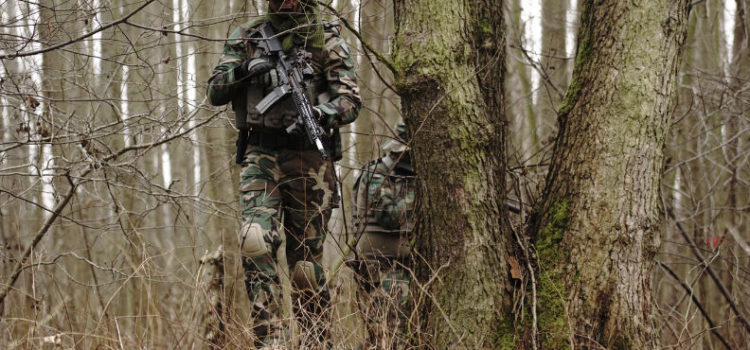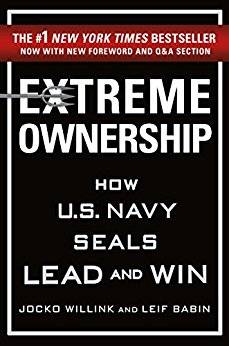

This article is an excerpt from the Shortform summary of "Extreme Ownership" by Jocko Willink and Leif Babin. Shortform has the world's best summaries of books you should be reading.
Like this article? Sign up for a free trial here .
Chapter 5 explores the Cover and Move strategy. On a battlefield, Cover and Move allows a team to work together to reach a destination: One group provides cover — keeping an eye out and having weapons ready to ward off enemies — as the other group advances forward. Then they switch roles, essentially leapfrogging forward, until they reach their destination.
This may not appear to have much relevance outside a warzone, but the principle of Cover and Move is teamwork. The entire team must work together, supporting and protecting each other, for everyone’s safety and success. Everyone on the team (or in the company) must be aware of everyone else’s position and objective to be able to move and act cohesively for one effort.
Cover and Move
Leaders need to keep the bigger picture in mind to use Cover and Move most effectively. While a leader can come up with a strategy to use Cover and Move within her own team, there might be an even better way to accomplish the same goal by working with another team or department — and that strategy could be twice as effective if it mutually benefits both departments. To do this, a leader needs to be able to collaborate with other leaders, identify their common goal, and clearly communicate to both teams how working together will help everyone achieve success.
Individual teams and departments need to consider how other groups depend on them, and they depend on other groups, to accomplish the company’s larger mission. All individuals and groups within the larger organization have to do their part to contribute to the success of the greater mission. By contrast, when teams compete against each other, it creates tension and undermines the greater goal. When the group fails, everyone fails; when the group wins, everyone wins.
By keeping the entire company’s goal in mind and understanding that everyone within the company is working together to achieve it, the leader can make decisions that not only help her own team succeed but gets the whole organization closer to success.
Battle Story of Cover and Move: Always Consider How Different Teams Can Help Each Other
In their efforts to take control of Ramadi from the Ira qi insurgents, the U.S. forces are using an aggressive strategy called Seize, Clear, Hold, Build. This entails forcing their way into the most strongly enemy-held neighborhoods, fighting back enemy fighters to clear the area, and then creating permanent U.S. combat outposts there.
One step in this strategy involves cordoning off a neighborhood, and then systematically searching and clearing each building in the neighborhood to ensure the area is safe. While necessary, this process is very dangerous for the U.S. troops, who risk coming face to face with enemy fighters. While U.S. forces move through the buildings, snipers are stationed strategically on a nearby rooftop to provide cover.
During one mission, the troops target a building for their sniper overwatch, but it turns out that the only clear view from the building is on a balcony where they would be exposed and visible to enemy fighters. They size up another nearby building, but find that it doesn’t offer a clear view either.
Time is running low to decide; the other teams will begin their search efforts soon and the snipers need to be in place for their safety. Babin, who is leading the team, decides the lesser of the two evils is to do the best they can from the first building.
The snipers get into position and the mission goes off successfully, with no U.S. injuries or deaths. The rest of the troops retreat back to base, while SOP calls for the sniper teams to wait until nightfall to return to camp. Although this policy is meant for the snipers’ safety — to avoid the danger of becoming walking targets as they move through the streets in broad daylight — it creates a risk in this case because they’re on a relatively exposed balcony; the building and position they’re in is not as secure as it should (and normally would) be. Hours of gunfire have already given the insurgents a decent idea of the snipers’ location, and following SOP would give them another eight to 10 hours to figure out where the snipers are and attack them.
Babin must again determine the lesser of two evils: In this case, he decides they will return to camp and not wait until darkness. The team uses Cover and Move to get there safely. With this tactic, one group positions themselves, weapons drawn, to cover and protect as the other group moves forward. Then the two groups switch roles, allowing the first group to move ahead, and they continue alternating until they safely reach the base.
Along the way, the team does encounter a spurt of attacks and gunfire, but they are still able to work together to stay safe and make it back to camp. However, when the snipers return to base, the chief angrily tells Babin that he made a mistake: He could have left a second sniper team in place at its overwatch position to cover his team as they moved back to base. Then, from an overwatch position at the base, his team could have provided cover for the other sniper team as they retreated back.
Babin had been so focused on his own team that he forgot the bigger picture. If Babin had used the same Cover and Move technique on a bigger scale involving more teams than his, it would have provided both teams better safety and coverage.
Business Application of Cover and Move: Help Others Help You
The production manager at a company is frustrated with a subsidiary company his team uses to transport their product. The manager’s team is having a hard time minimizing downtime in the production process — and downtime costs the company money. He blames the subsidiary company for making his team wait for pickups, which causes delays.
The manager feels he can’t do much to help or instruct the subsidiary company because it isn’t technically under his leadership. He has the attitude that he needs to be focused on his own team, he can’t be worried about this other company. However, Babin points out that if the subsidiary company is causing problems for his team, that this is the manager’s concern and it’s his responsibility to address the issue.

———End of Preview———
Like what you just read? Read the rest of the world's best summary of "Extreme Ownership" at Shortform . Learn the book's critical concepts in 20 minutes or less .
Here's what you'll find in our full Extreme Ownership summary :
- What Extreme Ownership means, and why every responsible leader needs to get it
- How to get your team working smoothly together
- How leadership principles from Navy SEAL teams work in everyday business and life






